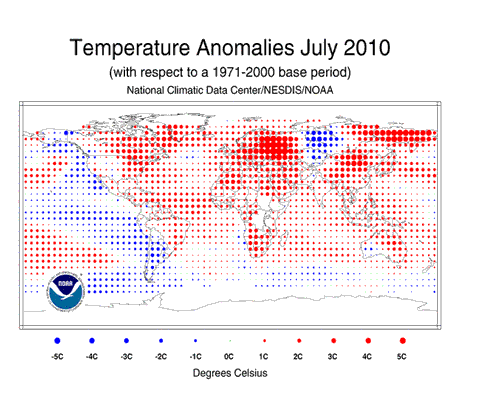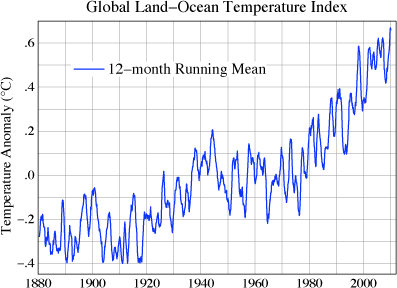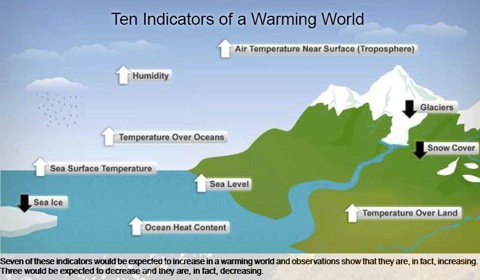
This has not only been a bad year for the Amazon rainforest, it has also been a year in which coral reefs, the rainforests of the ocean as they are sometimes called, have suffered severe bleaching because of raised ocean temperatures. Not a matter likely to strike the public consciousness. A recent Yale University survey found 75 percent of Americans have not heard of coral bleaching. But the reefs are one of the world’s great ecosystems and they matter enormously.
Mark Eakin, who coordinates the National Oceanic and Atmospheric Administration’s Coral Reef Watch and is frequently quoted in reports on this year’s bleaching events, explains that coral bleaching happens when ocean temperatures get too warm and stay warm for too long, and the relationship between the coral and the algae gets stressed. This thermal stress to corals, he said, is the highest it’s been since 1998, when 15% of the world’s coral reefs died.
“When you have high temperatures, in conjunction with normal high light conditions, the photosynthetic apparatus in the algae starts to poison the coral. They’ll spit them out into the water. When they do this, they lose their colour, look white, which is why they’re called bleached. If that persists for a long time, it can cause the corals to die.”
In July an article in the Telegraph on the coral bleaching events becoming apparent quoted Eakin:
“The bleaching is very strong throughout south east Asia and the central Indian Ocean. The reports are that it is the worst since 1997/1998. This is a really huge event and we are going to see a lot of corals dying.”
Indonesian reefs were badly affected. Some detail is provided in a report from the International Coral Reef Initiative which indicated the extent and severity of bleaching in different areas, and commented on the high rate of coral mortality following the bleaching.
In September Pierre Fidenci, president of Endangered Species International, wrote in a Mongabay article of severe wide-scale bleaching in the Philippines. The bleaching has been observed at many sites around the Philippines featuring mass mortality of corals including the coral triangle outside the Philippines. He considers this environmental catastrophe will probably be considered the most damaging bleaching event ever recorded in the Philippines, surpassing the big one of 1998.
“Prior to this year’s bleaching, it was estimated that about 85 percent of the reefs have been damaged or destroyed in the Philippines, now the current estimate is likely to be close to 95 percent.”
The Telegraph article noted scientists in Thailand have reported reefs suffering 90% of their corals being bleached and up to 20% of the corals dead. Olivia Durkin, who is leading the bleaching monitoring at the Centre for Biodiversity in Peninsular Thailand, said: “This year’s severe coral bleaching has the potential to be the worst on record.”
In June The Maldives reported the most serious incidence of coral bleaching since the major 1998 El Niño-event that destroyed most of the country’s shallow reef coral. Since then there has been gradual reef recovery but the 2010 event will be at least a major setback.
Eakin warned in September that this year had the potential to be also one of the worst bleaching seasons for some reefs in the Caribbean. It follows hard on the heels of the 2005 bleaching which caused record losses to Caribbean reefs, according to a collaborative study published a couple of weeks ago. More than 80 percent of surveyed corals bleached and over 40 percent of the total surveyed died as a result of the 2005 event. It will be a while before the effects of this year’s bleaching can be measured, but it is already apparent that in some locations this year’s event is worse than the event in 2005. Not only are temperatures causing further damage to reefs hit hard during the 2005 event, but new locations have also been impacted.
Eakin’s comment on the release of the study of the 2005 impacts:
“This severe, widespread bleaching and mortality will undoubtedly have long-term consequences for reef ecosystems, and events like this are likely to become more common as the climate warms.”
Bleaching is a consequence of a warming ocean, but it’s not the only adverse effect of global warming on corals. The other major impact is from the increase in ocean acidification as carbon dioxide emissions continue to rise. The double whammy is very clearly explained by Australian scientist and coral reef expert John Veron in his 2009 lecture to the Royal Society. I summarised his content in this post last year, and suggest any readers who’d like a longer explanation of what bleaching and acidification mean for the future of coral reefs take a look at it. The link to the video of the lecture provided in the post is outdated, but this link will get you there if you want to hear him in person. He is sombre about the outlook for coral reefs if greenhouse gas concentrations continue to rise, and nothing that has happened this year suggests he is getting it wrong.
Polar warming, Amazon drought, coral reefs bleaching and dying: I’ve gathered material for posts on all three of them within the past week. They are all sending out danger signals. They all threaten massive effects which cannot but have drastic consequences for humanity if they continue. And they’re only part of what threatens from climate change. They ought to have us scurrying to do what we are still able to do to prevent them developing further. The Cancún conference should be charged with a sense of high urgency.
I found myself applauding our Prime Minister when he said on Sunday that nothing less than the future of underground coal mining in New Zealand rests on the investigation into the Pike River tragedy. “We can’t put people into mines that are dangerous.” I also found myself wondering how that sentiment would go down with some of our economic interests. I thought John Key was absolutely right, and I presume in saying it he was not unaware of the economic implications. I guess I needn’t spell out the obvious parallel with the dangers from climate change and the perspective they put on the protests that economic interests mustn’t be harmed by climate change measures.
Johann Hari, in the eloquent article Gareth has already drawn attention to, wrote, “At Cancún, the real question will be carefully ignored by delegates keen to preserve big business as usual.” It’s the wrong choice, Hari points out. But as he also says it’s not too late to change.






